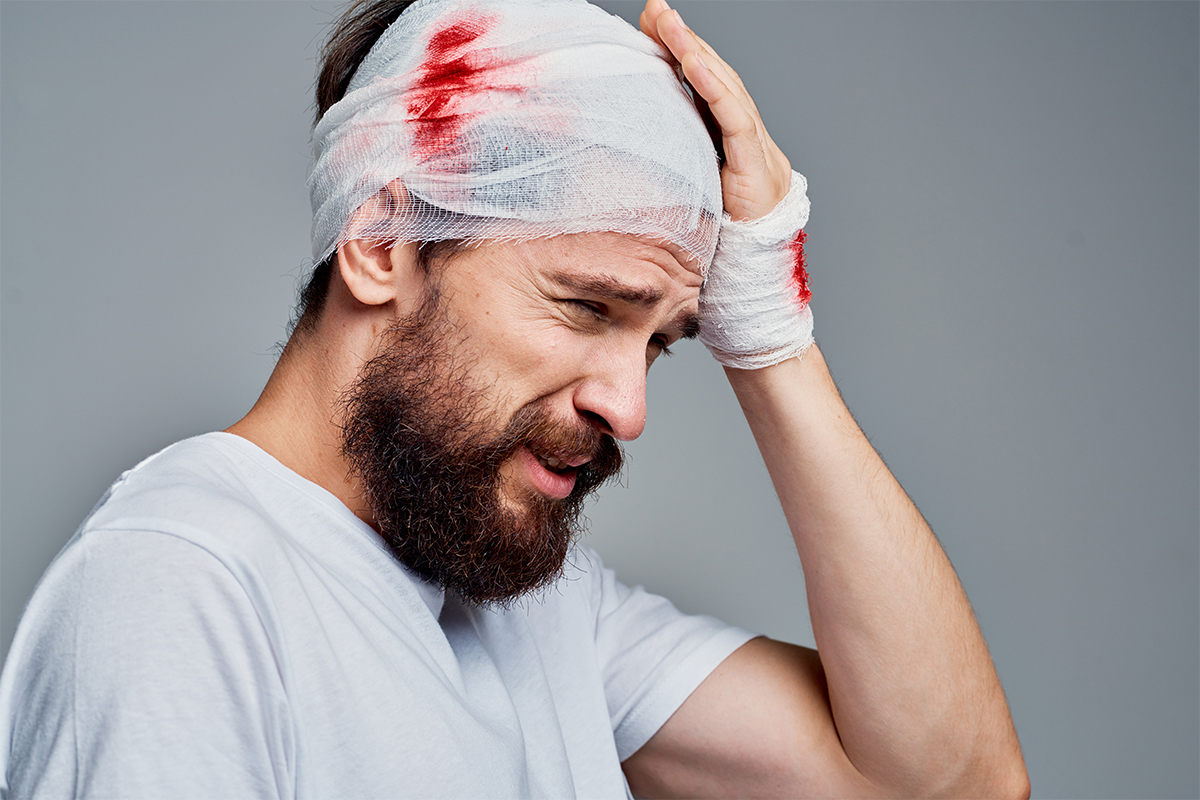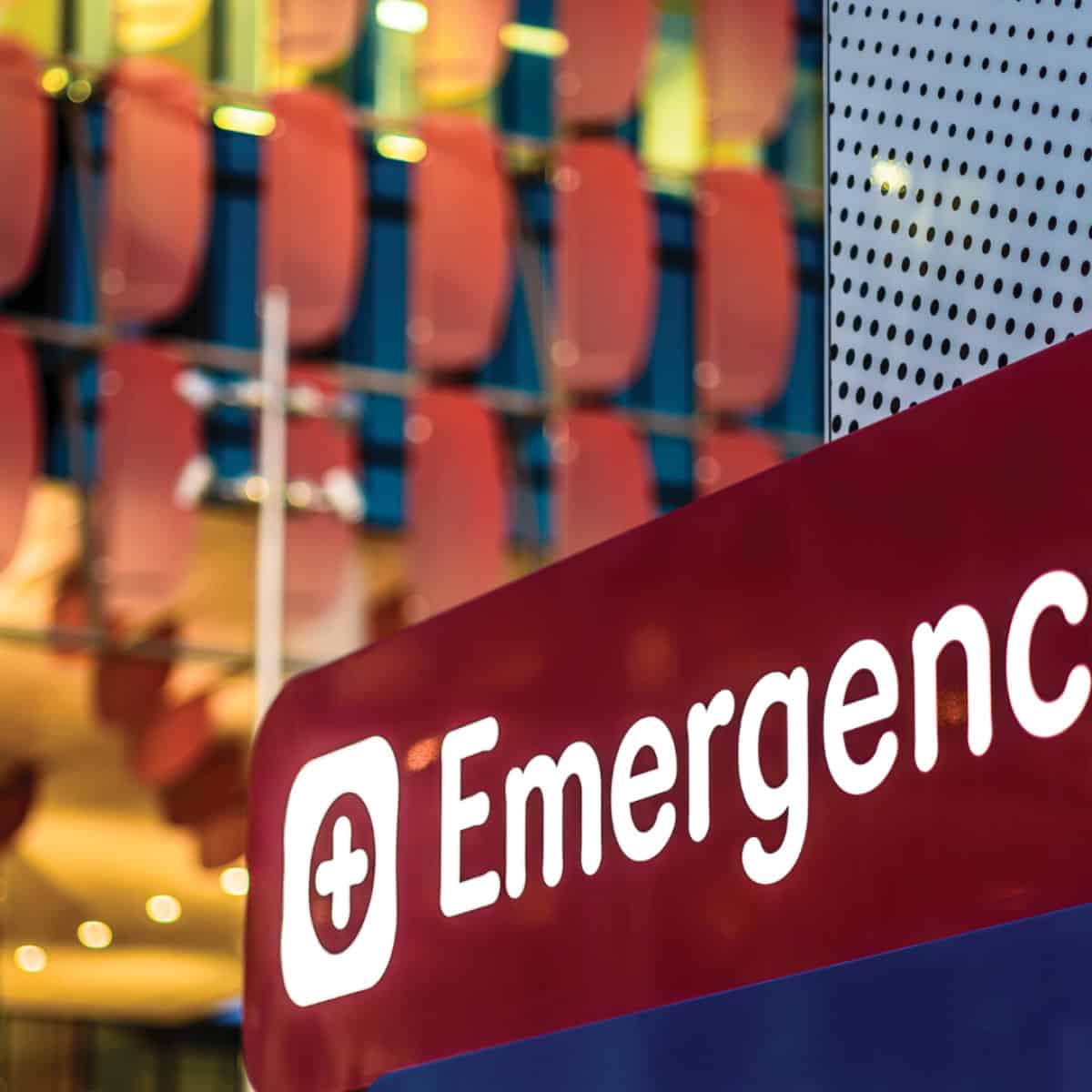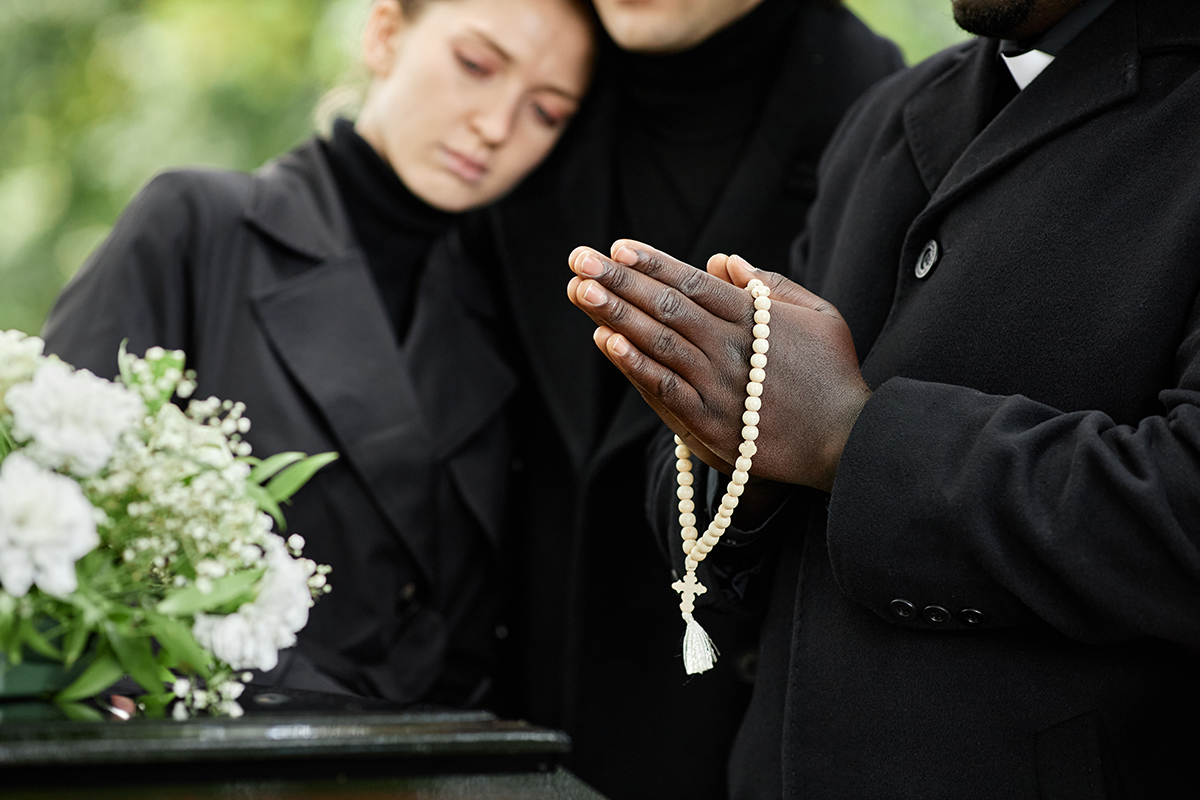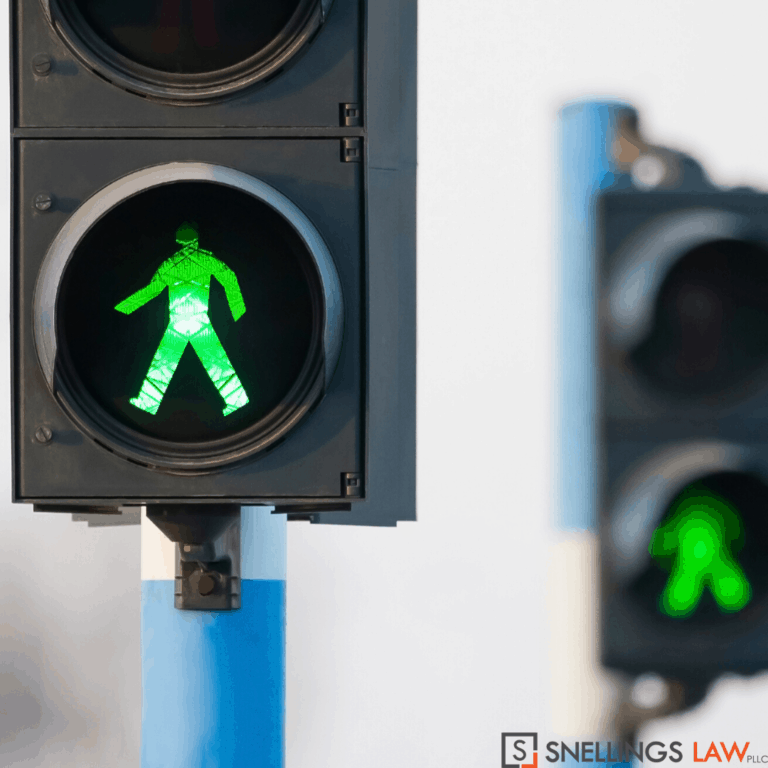Perhaps the most vulnerable individuals on our streets and roadways are pedestrians. Pedestrians have no vehicle to help them avoid a reckless driver and have no safety equipment to protect them as they cross streets and intersections. When a pedestrian is struck in a pedestrian accident, there is no vehicle or apparatus to help absorb the energy from the impact, such as a car, motorcycle, or even bicycle. This means the pedestrian’s body will absorb more energy, causing more severe injuries or even death.
Being struck by a vehicle is a terrifying experience, regardless of the severity of your injuries. One minute you are walking through a crosswalk and the next you are on your back wondering what just happened. Many drivers simply do not pay attention to pedestrians and focus only on other vehicles on the roadway. Drivers also have the bad habit of not paying attention to stop lines, crosswalks and oncoming pedestrians as they approach intersections.
Remember, after being struck in a pedestrian accident, it’s important to:
1. Seek medical treatment immediately.
Pedestrian accidents can cause catastrophic injuries such as internal injuries, spinal cord injuries, and broken bones. Sometimes injuries from pedestrian accidents won’t be immediately visible and may develop worse symptoms over time. In these cases, it’s best to see a doctor as soon as possible so that you can catch injuries from the pedestrian accident early on and develop a comprehensive treatment plan.
The true depth of your injuries may not be readily apparent at the scene of the accident. You may be knocked unconscious or be unclear about the severity of internal injuries such as damage to your organs or a traumatic brain injury. Only a physician can help you to identify the serious problems after the fact. It is also possible that some of your most serious symptoms, like whiplash or a spinal cord injury, might not be noticeable to the naked eye right after the accident occurs.
You may discover during these hours, days, or even weeks after the accident that the cost of medical bills can be extensive. This is to say nothing of the serious impact that recuperating from an accident can have on your life: having to attend your medical treatments, going through surgeries, taking pain medication, and other aspects of handling your injuries such as physical therapy.
2. Seek the help of a pedestrian accident attorney.
You typically have two years after a pedestrian accident to file a claim. Still, insurance adjusters will try to avoid paying you reasonable compensation for your injuries. Having a pedestrian accident attorney on your side while dealing with a pedestrian accident will help make the process go much smoother. They can thoroughly document your damages and effectively negotiate with the at-fault’s insurance adjuster. Additionally, a pedestrian accident attorney can assist you in finding medical treatment to continue healing your injuries.
Beyond these immediate benefits, a skilled attorney can help you navigate the complexities of your financial recovery. They will assist with your medical bills, lost wages, and other damages, ensuring you are compensated for both economic and non-economic losses. This comprehensive support helps not only you but also your family members, who often must adjust to a new way of living in the wake of an accident.
Dealing with the aftermath of an accident can be overwhelming. Your schedule may now be filled with doctor’s appointments and rehabilitation therapy, and there may come a point when doctors believe you have achieved maximum medical improvement, even if you are not fully recovered. This can be a challenging reality to accept, but having a knowledgeable attorney can provide the guidance you need.
Texas law limits how long you have to file a claim to 2 years in most instances. Consulting with a pedestrian accident attorney will give you a better understanding of what is involved in filing an injury claim and the crucial steps you need to take to protect yourself. They will pursue the full range of damages you are entitled to under Texas law, ensuring you receive the justice and compensation you deserve.
How Can a Dallas Pedestrian Accident Lawyer Prove Driver Negligence in Pedestrian Accidents?
Proving driver negligence in pedestrian accident cases involves demonstrating specific legal elements. Here’s how a Dallas pedestrian accident lawyer can establish the driver’s fault:
Establishing Duty of Care
First, the lawyer must show that the driver owed the pedestrian a duty of care. In Texas, all drivers are legally required to operate their vehicles safely to protect other road users, including pedestrians. This means driving responsibly and adhering to traffic laws to prevent accidents.
Demonstrating Breach of Duty
Next, it’s crucial to prove that the driver breached this duty. This involves showing that the driver’s actions deviated from those of a reasonable and prudent person under similar circumstances. Breaches of duty might include:
- Speeding: Exceeding legal speed limits or driving too fast for conditions.
- Ignoring Traffic Signals: Running stop signs or stoplights, including improper turns on red.
- Intoxication: Driving under the influence of alcohol or drugs.
- Distraction: Engaging in activities like texting while driving.
- Inattention: Failing to follow pedestrian safety laws, particularly at crosswalks.
Proving Causation
The lawyer must then demonstrate that this breach of duty directly caused the pedestrian’s injuries. Essentially, they need to show that the injuries wouldn’t have occurred if the driver hadn’t violated their duty of care. This often involves presenting evidence such as accident reports, witness statements, and expert testimony.
Documenting Damages
Lastly, it’s vital to prove that the pedestrian suffered actual damages due to the accident. These can be financial, physical, or emotional. Documentation such as medical bills, records of lost wages, and evidence of pain and suffering are used to substantiate these claims.
Legal Support and Free Consultations
Dallas pedestrian accident lawyers offer specialized legal support to evaluate and establish these elements of negligence. Many offer free consultations to help victims understand their rights and the potential for compensation. The goal is to ensure victims receive every bit of compensation they deserve under Texas law.
By meticulously addressing each of these elements, a Dallas pedestrian accident lawyer builds a compelling case to prove driver negligence and secure just compensation for their clients.
What Rights Do Pedestrians Have in Texas?
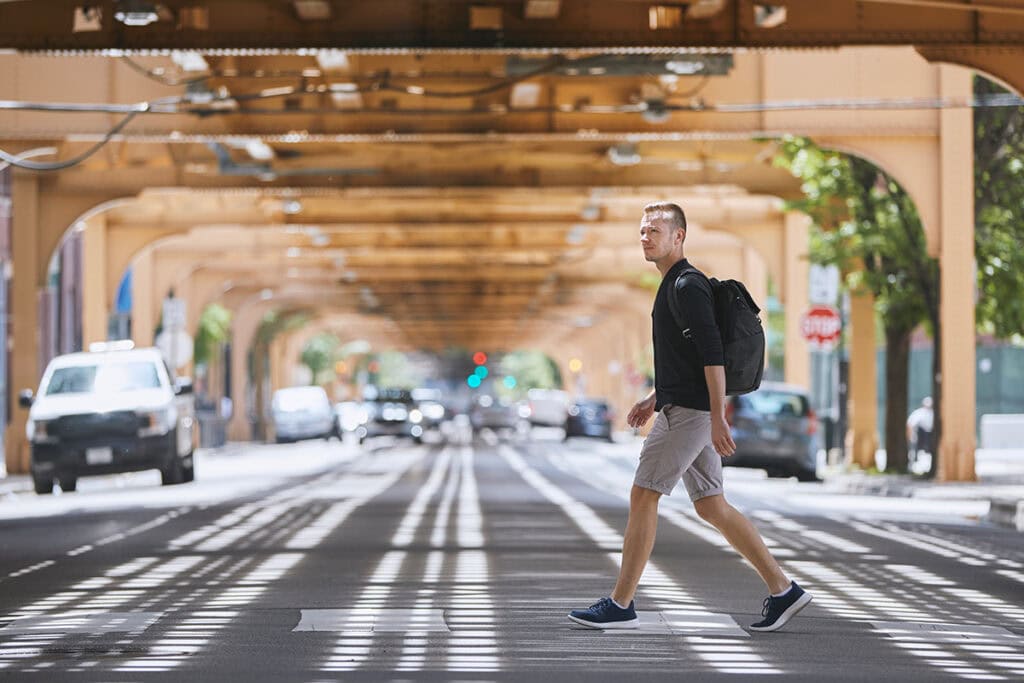
Pedestrians in Texas have specific rights designed to protect them, even though they don’t always have the right of way. Here’s a breakdown of those rights and the responsibilities drivers have:
Driver Responsibility
- Avoiding Collisions: Drivers must exercise caution to avoid hitting pedestrians. This includes using their horn to warn pedestrians and taking extra care around children and those with disabilities.
- Due Care: The law mandates drivers to operate their vehicles in a manner that actively avoids endangering pedestrians.
Protected from Negligence
Pedestrians injured due to a driver’s negligence, such as inattentiveness, reckless behavior, or driving under the influence, are protected under Texas Drivers can be held accountable for such negligent actions.
Precaution for Vulnerable Groups
Special care must be taken by drivers around vulnerable pedestrian groups, including children or incapacitated individuals.
Summary
While the laws place much of the onus on drivers to prevent accidents, pedestrians in Texas are well-protected from negligent driving. This comprehensive approach ensures safety and accountability on the roads.
What are the Four Legal Elements Needed to Prove Negligence in Texas?
To establish negligence in a pedestrian accident case in Texas, a lawyer must demonstrate four critical legal elements. These elements are essential to showing that the driver involved in the accident acted negligently, resulting in injury to the pedestrian.
Duty of Care
First, it must be shown that the driver had a legal obligation to act in a manner that ensures the safety of others on the road. Texas law mandates that drivers must operate their vehicles cautiously to avoid causing harm to other drivers, pedestrians, and cyclists.
Breach of Duty
Once a duty of care is established, the next step is to prove that the driver violated this duty. This breach can occur in a variety of ways, such as:
- Speeding or driving at an unsafe speed
- Ignoring traffic signals, such as stop signs or lights
- Operating the vehicle under the influence of alcohol or drugs
- Driving while distracted, for example, texting while driving
- Failing to yield to pedestrians in crosswalks
Each of these actions demonstrates a failure to adhere to the standard of what a reasonable person would do under similar circumstances.
Causation
The third element involves demonstrating a direct link between the breach of duty and the injuries sustained by the pedestrian. Essentially, it must be proven that the injuries would not have occurred if the driver had upheld their duty of care.
Damages
Finally, the injured party must present evidence of actual losses resulting from the accident. This can include a range of damages such as:
- Medical bills
- Lost wages
- Physical and emotional pain and suffering
Documenting these damages is crucial to establishing the extent of the harm suffered due to the driver’s negligence.
By systematically proving these four elements—duty of care, breach of duty, causation, and damages—a pedestrian accident lawyer can build a strong case demonstrating the driver’s negligence.
What Are Non-Economic Damages in Pedestrian Accident Cases?

Non-economic damages account for the intangible losses that a victim experiences following a pedestrian accident. Unlike economic damages, which cover tangible costs like medical bills or lost wages, non-economic damages are more subjective and harder to quantify. Here are some examples:
- Physical Pain and Suffering: The various levels of physical discomfort and distress endured by the victim.
- Mental Anguish: Emotional trauma, anxiety, and any psychological impact resulting from the accident.
- Loss of Enjoyment of Life: Reduced ability to participate in activities and hobbies once enjoyed before the accident.
- Scarring and Disfigurement: Permanent changes to one’s appearance due to injuries from the accident.
- Permanent Impairment or Disability: Long-lasting or lifelong physical limitations caused by the accident.
In cases of wrongful death, non-economic damages can extend to the victim’s family members. These can include:
- Loss of Consortium: The deprivation of the benefits of a family relationship due to the death.
- Loss of Society and Companionship: The emotional emptiness left by the absence of the deceased individual.
Understanding these types of damages helps in recognizing the full extent of harm caused by pedestrian accidents, ensuring that the victims receive appropriate compensation for their suffering.
Understanding Economic Damages in Pedestrian Accident Cases
In pedestrian accident cases, economic damages refer to the quantifiable financial losses a victim incurs due to the incident. These losses are tangible, meaning they have specific monetary values assigned to them. Here’s a breakdown of what constitutes economic damages:
- Medical Expenses: This includes costs related to emergency room visits, surgeries, medications, rehabilitation, and any anticipated future medical care.
- Lost Income: If the victim is unable to work due to their injuries, both past and future lost wages fall under this category.
- Property Damage: Any personal property damaged in the accident, such as clothing, electronics, or other belongings, can be compensated.
- Replacement Services: When the victim requires services they would typically handle themselves, such as housekeeping or childcare, these costs are also covered.
Economic damages aim to compensate for the direct financial impact of the accident, ensuring the victim can cover their expenses and return to their pre-accident financial state.
What Are Some Less Frequent Causes of Pedestrian Accidents in Dallas?
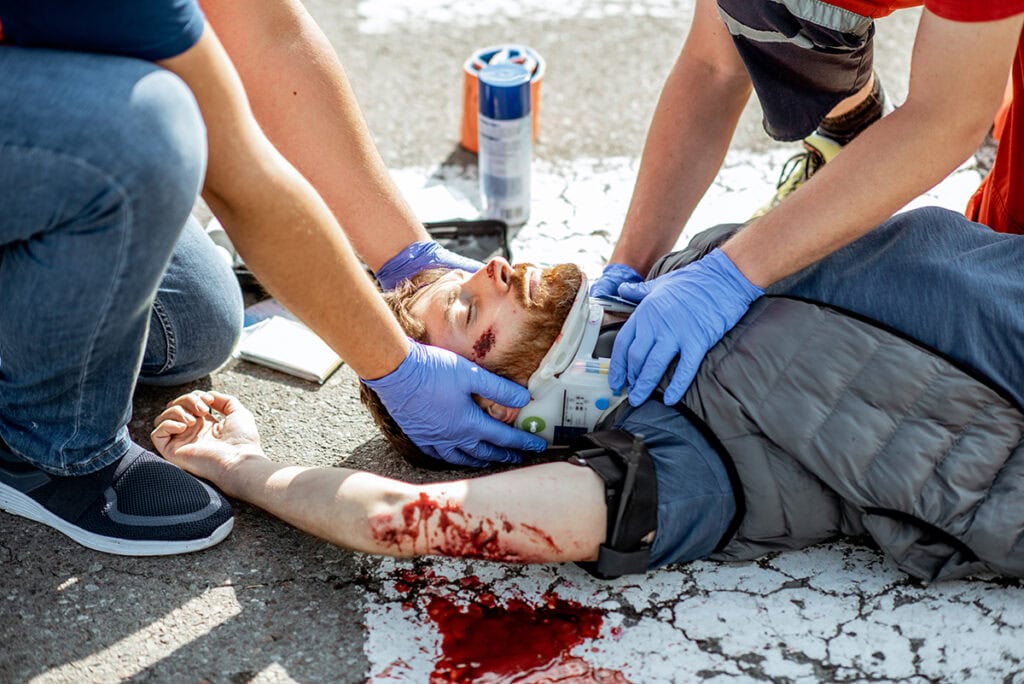
While driving errors often lead to pedestrian accidents, certain less common behaviors also contribute to these incidents. Understanding these can help both drivers and pedestrians stay safer on the streets.
Examples of Uncommon Causes:
- Reversing Unsafely
Drivers occasionally fail to check their surroundings when backing up, especially in busy areas or driveways. - Lane Drifting
Failing to stay in one’s lane, often due to inattention or distractions, can lead to hazardous situations for pedestrians. - Inappropriate Turning
Turning without ensuring the safety of pedestrians – whether at crosswalks or intersections – is a notable, although less frequent, cause. - Driving Under Drug Influence
Operating a vehicle under the influence of substances, besides alcohol, impairs judgment and reaction times. - Alcohol-Impaired Driving
Drinking and driving remains a problem, but it’s less frequent compared to distracted driving or other violations. - High-Speed Driving
Exceeding safe speed limits, particularly in pedestrian-heavy zones, can drastically increase accident risks.
Call Snellings Law for a Free Strategy Session
At Snellings Law PLLC, we have represented numerous pedestrians struck by vehicles on roadways, crosswalks, intersections, and sidewalks in pedestrian accidents. We work on contingency fees, meaning that we don’t get paid unless we win your case for you. We offer free strategy sessions with one of our pedestrian accident attorneys to discuss your case and determine your next steps.
If you have been struck by a vehicle in a pedestrian accident, our pedestrian accident lawyers at Snellings Law PLLC can guide you through the injury claim process. We can also help you find healthcare providers that are willing to treat you for the injuries you have suffered. As with any personal injury case, timing is extremely important.
If you or a loved one has been injured in a pedestrian accident due to someone else’s negligence and need a pedestrian accident lawyer, please give us a call at (214)-387-0387 to set up your free consultation.



